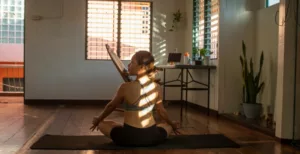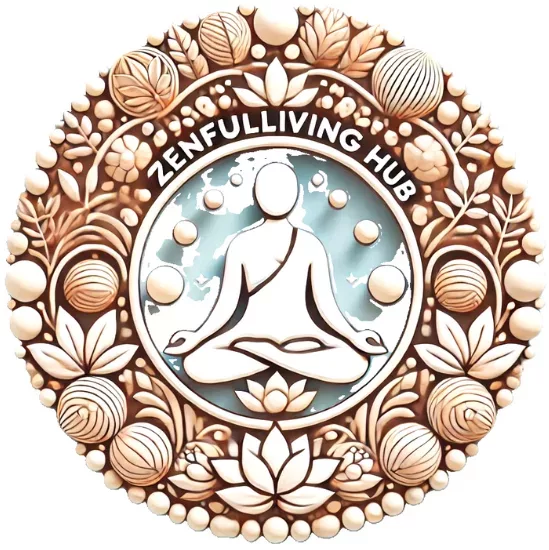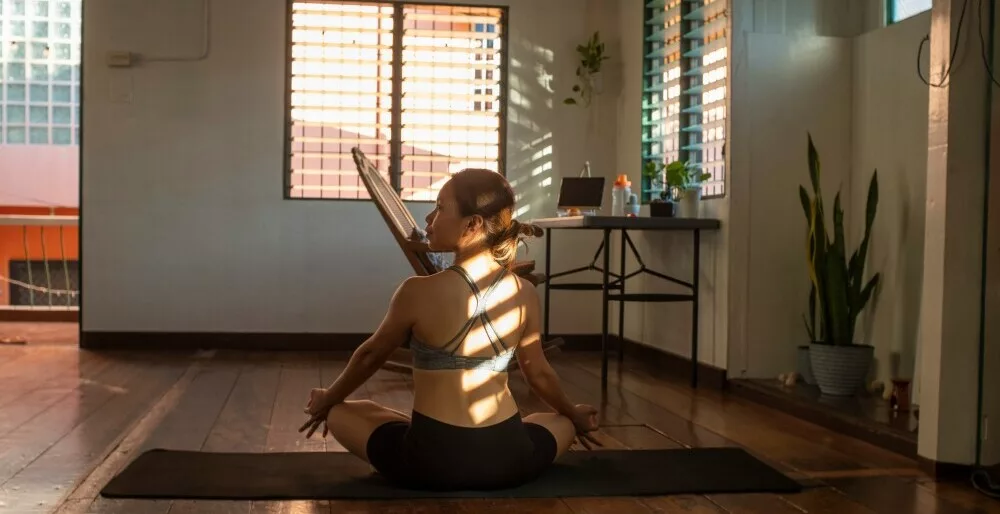Mindfulness: A Path to Present Moment Awareness
Mindfulness has become a bit of a buzzword lately, and there’s a good reason for that. At its core, mindfulness is about paying full attention to the present moment without judgment. It’s a practice that encourages us to slow down, breathe, and truly notice what’s happening around us and inside our own minds.
So, why are more people turning to mindfulness? Research, such as studies from Harvard Health, has shown that practicing mindfulness can lead to a range of mental and physical health benefits. It’s not just about being calm and zen; it’s got some solid, science-backed benefits. Mindfulness can reduce stress, improve sleep, and even boost your focus and creativity. Imagine having a tool you can use anytime to bring a little more peace and clarity to your day.
 Getting started doesn’t require any special equipment or major time commitment. It’s about forming simple habits that fit into your life. Whether it’s five minutes in the morning focusing on your breath or practicing mindful walking during your lunch break, there’s a way to make mindfulness work for you.
Getting started doesn’t require any special equipment or major time commitment. It’s about forming simple habits that fit into your life. Whether it’s five minutes in the morning focusing on your breath or practicing mindful walking during your lunch break, there’s a way to make mindfulness work for you.
Throughout the article, I’m going to highlight several practical ways to weave mindfulness into your daily routine, each with its own unique perks. This simple practice is about improving life one moment at a time, supporting a healthier, happier you.
Reducing Stress: Cultivating Calmness Through Mindfulness
Stress can creep into our daily lives in surprising ways, affecting our bodies and mental health. That’s where mindfulness steps in, offering a powerful method to handle life’s pressures. By focusing on the present, mindfulness can activate the body’s relaxation response, counteracting the adrenaline surge that comes from stress.
Starting your day with a simple mindfulness exercise can set a peaceful tone. Try this: take five minutes in the morning to find a comfortable spot. Focus on your breath, inhaling deeply for four counts, holding the breath for another four, and exhaling slowly for six counts. This kind of low-effort mindfulness exercise helps to reset the nervous system, reducing stress-related symptoms like tension and anxiety.
The beauty of mindfulness lies in its flexibility. It can be woven seamlessly into your existing routine. Whether you’re standing in line or sitting in traffic, snatching even a few mindful breaths can help you cultivate calmness and resilience. Think of it as a mini-vacation for your mind, helping to keep stress at bay when life gets hectic.
Enhancing Emotional Regulation and Self-Awareness

Mindfulness isn’t just about calming the mind – it’s also a powerful ally in understanding and regulating emotions. By practicing mindfulness regularly, you get better at recognizing your emotional responses before they take over. This awareness allows for more thoughtful reactions instead of impulsive ones.
Picture this: You’re overwhelmed and ready to explode. Instead of reacting immediately, try pausing for a moment. Take a few deep breaths, and simply observe your emotions. Notice them without judgment. By acknowledging how you feel without immediately acting on it, you gain control, opening the door to better emotional responses.
Alongside emotional regulation, mindfulness fosters deeper self-awareness. By paying attention to your thoughts and feelings, you begin to understand your habitual patterns and how they affect your life. This awareness can prompt self-compassion and encourage you to challenge unhelpful thoughts, leading to genuine growth.
One simple practice to enhance this self-awareness is to pause during moments of self-doubt. Ask yourself, “What am I thinking right now?” This question helps bring hidden thoughts to light, making it easier to tackle negative self-talk head-on.
For more on self-awareness techniques, check out Improve Your Self Awareness for Personal Growth.
Improving Focus, Sleep, and the Mind-Body Connection
In our multitasking world, maintaining focus can be a real challenge. Mindfulness comes to the rescue by sharpening attention, helping you stay present with whatever task is at hand. Through regular practice, you can train your mind to notice when it drifts, gently bringing it back to the task at hand.
Try this exercise: while working on something important, set a timer for 10 minutes and dedicate that period to your task alone. If distractions pop up, acknowledge them without frustration and guide your focus back. This practice of mindfulness at work enhances productivity.
Having trouble sleeping? Mindfulness can help you unwind before bed for a more restful night. A calming routine to try is the body scan meditation. Spend 10 minutes mentally scanning your body, noticing tension, and consciously releasing it. This simple practice can ease a racing mind, paving the way for deeper sleep.
Beyond focus and sleep, mindfulness deepens the mind-body connection, which is essential for overall well-being. Mindful movements like yoga or tai chi, or even mindful walking, where you pay attention to each step and the sensations it brings, can strengthen this connection.
Explore more on improving sleep through mindfulness at SleepFoundation.org.
Enriching Relationships, Resilience, Creativity, and Well-Being
Mindfulness doesn’t just work wonders on individual stress or focus – it has the potential to significantly enrich relationships and overall well-being. By fostering empathy and patience, mindfulness strengthens our connections with others. Practicing active listening in conversations, really tuning in without planning your response, can deepen emotional bonds and improve communication.
Aside from enhancing interpersonal connections, mindfulness is a sturdy ally in building resilience against both physical and emotional pain. Embracing sensations without judgment, whether it’s actual physical discomfort or an emotional hit, helps cultivate a non-reactive awareness. This approach doesn’t just lighten the immediate burden; it prepares you to handle future challenges with balanced composure.
Mindfulness isn’t just about handling discomfort. It also opens up pathways for creativity to flourish. By breaking away from habitual thought patterns, mindfulness encourages innovative thinking. When faced with a creative block, dedicating a few moments to focusing on your breath or subtly observing your surroundings can clear mental clutter, sparking new ideas and solutions.
The overarching theme here is that mindfulness supports an enhanced quality of life, grounding you in calmness and contentment. Even as you go about daily activities – driving, washing dishes, taking a walk – small mindful pauses can enrich your day, promoting balance and well-being from the inside out.
Incorporating mindfulness into your daily life isn’t about becoming someone else; it’s about becoming more fully yourself. By embracing this practice, you’re empowering yourself to meet life’s complexities with clarity, compassion, and creativity. A regular mindfulness practice nurtures not only personal growth but fosters an environment where well-being thrives.


This article on mindfulness really highlights its transformative power in such a relatable way. I love how it emphasizes mindfulness isn’t about changing who you are but embracing the present moment more fully. It’s true, so many people think of mindfulness as just sitting in silence, but there are so many small moments throughout the day where you can integrate it, like focusing on your breath while waiting in line or walking.
The practical exercises were really helpful too. For example, the body scan meditation for better sleep is something I plan to try. The idea of incorporating mindfulness into everyday activities like washing dishes or driving makes it feel much more accessible and sustainable.
Incorporating mindfulness doesn’t require drastic changes just small, intentional moments throughout the day. It’s a practice that, when integrated into daily life, can really lead to better focus, improved emotional health, and even deeper relationships.
Thank you so much for your thoughtful feedback! I’m thrilled that the article resonated with you and that you found the examples and exercises practical and relatable. You’re absolutely right—mindfulness is about embracing the present moment as it is, not about striving to become someone different. The beauty of mindfulness lies in those small, intentional moments that weave seamlessly into our daily lives, like breathing mindfully in line or walking with awareness.
I’m especially glad you plan to try the body scan meditation for better sleep—it’s such a calming practice and one of my favorites. The idea of incorporating mindfulness into everyday activities, like washing dishes or driving, is exactly what makes it sustainable and accessible. These simple practices can truly transform our relationship with ourselves and the world around us.
I hope you enjoy exploring these mindfulness moments and find them as enriching as I do. If you have any questions or would like more suggestions, feel free to reach out—I’d love to hear about your experience with the body scan or any other practices you try! 😊
This article truly resonated with me! I started practicing mindfulness about a year ago after feeling overwhelmed by work stress. At first, it was difficult to slow down, but even just a few minutes a day made a noticeable difference.
One of the biggest shifts for me was learning how to regulate my emotions. I used to react impulsively when I was stressed or upset, but mindfulness helped me pause, breathe, and respond thoughtfully. The example you gave about observing emotions without judgment really hits home—this has been a game-changer in my personal relationships and how I handle tough situations.
I also love how you mentioned mindfulness’s role in improving sleep. I used to struggle with racing thoughts before bed, but incorporating a body scan meditation into my routine has been incredibly calming. It’s amazing how such a simple practice can quiet the mind and prepare it for rest.
The section about enriching relationships and fostering creativity really speaks to me too. Mindful listening is something I’ve been working on, and it has deepened my connections with others in ways I didn’t expect.
Thank you for breaking down mindfulness into practical steps—it’s such a powerful tool for improving life, one moment at a time. This article is a wonderful reminder to stay consistent with my practice, and I’ll definitely be sharing it with others!
Julie
Thank you Julie for your great personal stories. I’m so glad you found those tips are useful.